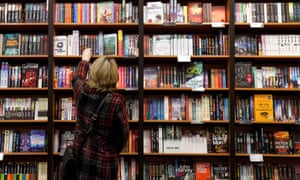The 100 bestselling books of the year: from Eleanor Oliphant to Michelle Obama
While Gail Honeyman is completely fine, where have all the female writers gone? John Dugdale takes a look at 2018’s biggest books and the year’s trends

There are two contrasting strategies for achieving a mega-seller, as illustrated by the uppermost books in 2018’s chart. You can publish it in mid-winter, or alternatively April, and then watch it accumulate stonking sales: that worked in the past for newcomers such as Paula Hawkins, Joe Wicks and EL James, and it has propelled Adam Kay, Yuval Noah Harari, Heather Morris and Tom Kerridge (beating Jamie Oliver, last year’s No 1 for the first time) into the list’s elite. Most spectacularly, it was the recipe for the success of Gail Honeyman’s debut,Eleanor Oliphant Is Completely Fine, published in paperback on 25 January and 11 months later more than 300,000 sales ahead of its nearest rival.
The other, more conventional technique is to bring a big name’s hardback out in the pre-Christmas peak season and sell shedloads in a few weeks, an approach that slotted David Walliams and Jeff Kinney into their accustomed high places alongside paperbacks by fellow perennials Dan Brown and Lee Child. Crashing their stag party this time was Michelle Obama, whose November-released autobiography showed (as Alex Ferguson’s did five years ago) that the moribund form of the celebrity memoir can still be viable if the author is charismatic and candid enough.
While Honeyman and Obama’s performances were stunning, they are the only women in a blokey top 10. And although that stark split is untypical of the rankings as a whole, there is a pervasive sense of women being in retreat after a heady 2017. Male authors, for example, consolidated their dominance in children’s fiction (despite the remarkable return of three JK Rowling sagas from the 1990s) and cookery (where Mary Berry alone took on the male chefs), and penned most of the chart’s 25 crime novels, while the female-driven subgenre of the psychological thriller was on the wane. Tot up the names, and you have 63 men credited, compared with 35 women; a big turn-around from last year’s 50 women and 40 men.
What Obama’s stellar presence at the top also belies is a marked lack below her of other writers of colour. Publishing has agonised in recent years about being “hideously white”; but the impact of the resulting initiatives has yet to show up commercially on the evidence of a chart you have to peer at before you spot Celeste Ng (44) and Reni Eddo-Lodge (96).
Eddo-Lodge’s essay on race was part of an improved showing by non-fiction, with Michael Wolff’s Trump exposé Fire and Fury (24) joining Kay’s hospital tales (2), Obama’s Becoming (8) and Harari’s sweeping history (9) in the upper echelons. So-called “smart thinking” books did well, whether they were popular science, such as Why We Sleep (26), or life-guides, such as those by Jordan Peterson (32) and Matthew Syed (53); and their concern with everyday dilemmas and experience can be seen as in line with the emphasis on practicality and self-improvement of Kerridge, Oliver and Wicks’s top-ranked recipe titles – and indeed as reflecting the same anxious zeitgeist as Honeyman’s probing psychological study.
Look for an equivalent brainy strain of novels, however, and you’ll find it challenging: literary fiction is scarcer than in 2017, and often set – with Eleanor Oliphant and Ng’s Little Fires Everywhere the main exceptions – in the past or future, as with Neil Gaiman and Stephen Fry’s myth retellings (31, 66), CJ Sansom’s Tombland (46) and the TV tie-in reissue of The Handmaid’s Tale (43). The conspicuous absence of Sally Rooney’s widely admired, heavily promoted debut Conversations With Friends, in paperback since March, testifies to how rare it has become for a literary novel with a contemporary setting to combine critical acclaim with mass appeal.

Comments
Post a Comment